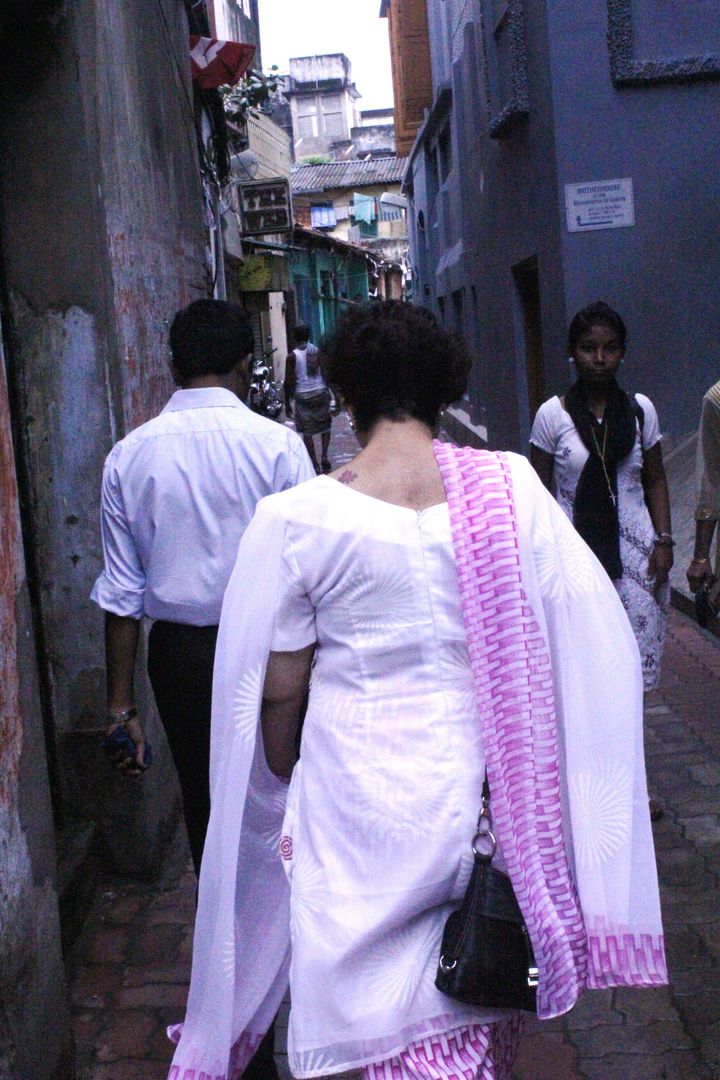
During my orientation session with International Justice Mission Canada, I was given an introduction to the problem of trafficking in India. I learned that India's population is 1.27 billion. The population of West Bengal is 91 million. Kolkata has a population of 15 million.
Most of the children trafficked in Kolkata and West Bengal are from within India but there are also some from Nepal. The border between Nepal and India is very porous and therefore easy to transport people within these two countries.
What should the model look like from injustice to justice?

What does the current justice system look like in Kolkata?

In Kolkata, the justice system cannot properly function because it faces too many challenges, especially around resources.
International Justice Mission (IJM) helps to fix these problems. They identify brothels in Kolkata where girls and women have been trafficked for sexual exploitation. Their investigators work with police and local authorities to rescue the girls and ensure that the traffickers are held to account for breaking Indian anti-trafficking laws. They also provide aftercare for the girls. I was really impressed by their protectiveness of the underage girls and how the focus was entirely on the victim. Her welfare was paramount, and they would work with her no matter how long it took for her to recover. Their work is invaluable in making sure there is hope for those who are sexually trafficked.
In truth though, the public system is broken. There is no doubt that the local authorities and the Indian government are making an effort to stop the trafficking, but this problem cannot solely rest on the shoulders of local or Indian government, or on the work of non-profits like IJM. It is a worldwide problem and therefore all governments need to be involved. That is why I believe I need to be involved as a law maker from Canada. I need to do my share in raising awareness of trafficking of children and being a force in changing Canadian laws so that we can help those abroad.
After the orientation session, we went to the red light district. We were prepared by IJM on issues of security and what to expect when we went to the red light district. I listened carefully to the instructions and thought I was ready for the visit.
Nothing could have prepared me for what I saw.
When we drove through one red light district I was shocked by the number of girls and women I saw. There were women of all ages in all kind of dress.
I locked eyes with a woman who looked my age (but I am sure she was much younger). We stared into each other's eyes. I am sure my eyes were asking WHY? at her age, she was standing in line to be traded by the pimps. (There were pimps all around us, sitting outside with the girls whose services they were selling.) The woman of my age stared back at me with an angry glare, and I did not understand why she was mad at me.
It seemed like ages that we stared at each other. The look in her eyes made me fearful that there would be an incident, so I turned my gaze and stared in disbelief at the hundreds, if not thousands, of women standing in line waiting for johns.
As we were ending our drive into the district I saw a very young Nepali girl. To me, she looked as if she was twelve. Her eyes conveyed the absolute betrayal she felt, and before I could do anything, she fled. I just saw her for a fleeting second.
Instead of driving, we walked through the second red light district. During the tour, I was in a daze. All I could see was women around me and by this time I just wanted to get out. I felt like I was suffocating. When we returned to the hotel, I returned to my room and just sat in bed staring at the wall. I felt dirty, overwhelmed and dejected.
It occurred to me that the woman of my age was staring at me angrily to demand who was I to judge her.
And in truth, I had been judging her. I felt a deep regret for doing so. I do not walk in her shoes, and I do not face her challenges nor do I have her concerns. I have made peace in my mind's eye with her.
The young Nepali girl is another thing. For just a fleeting second I caught her look of betrayal. That, I have not been able to wipe out of my mind.
She and 2 million other children have been betrayed by us politicians. We could stop the children from being trafficked, and yet we have done nothing. As a group, we need the will to take action.
I will be carrying this girl's image with me and I know it will propel me to create the will and the momentum so that my fellow politicians and I can stop the trafficking of 2 million children.
In my next blog I will cover my experience in the court system and the courts challenges to deal with the issues of trafficking with so few financial resources.